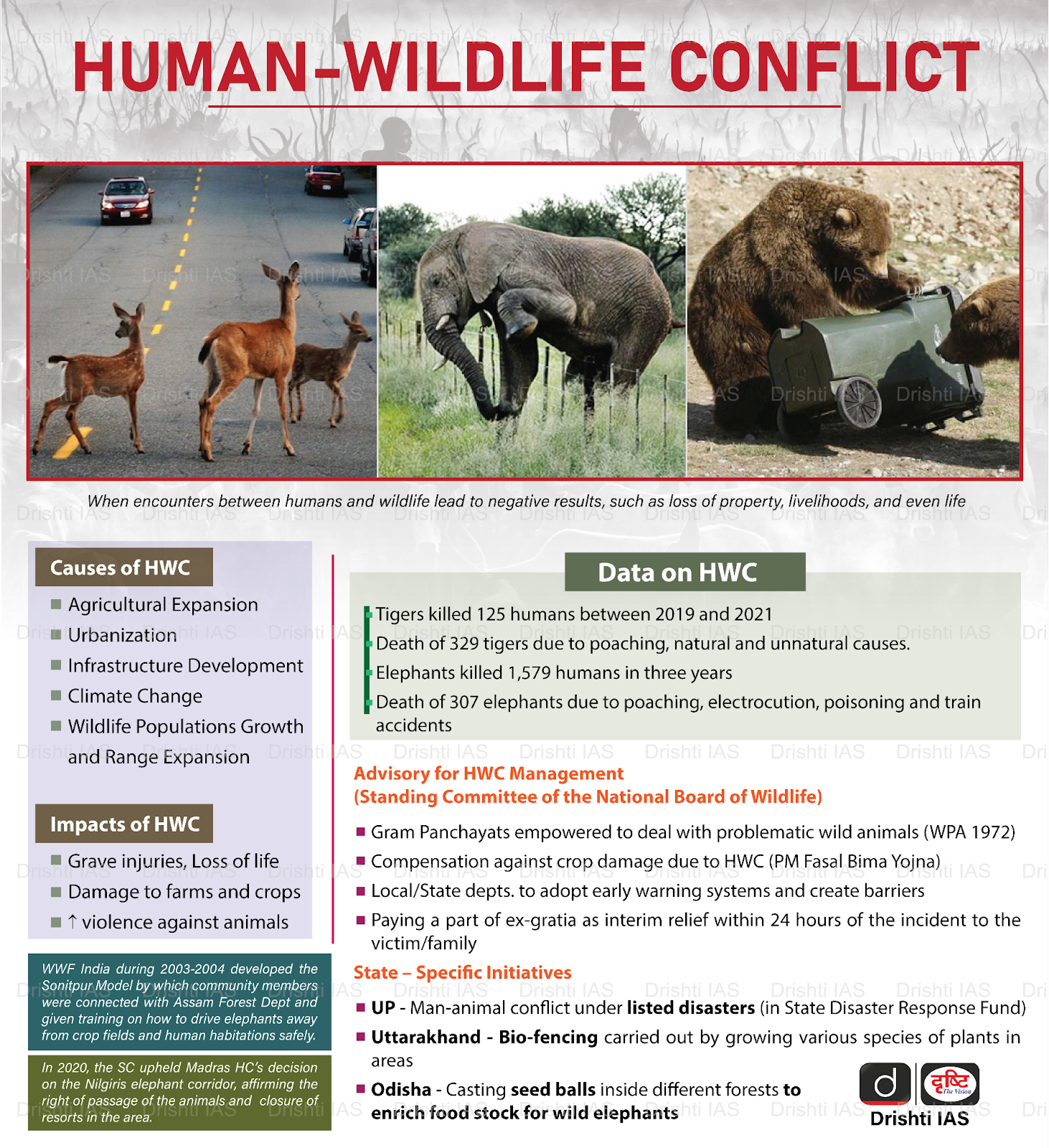Uttar Pradesh
UP to Set up Four Modern Rescue Centres
- 25 Jun 2025
- 3 min read
Why in News?
The Uttar Pradesh government is establishing four modern rescue centres to manage the increasing encounters between people and large carnivores.
Key Points
About Rescue Centres
- The forest and wildlife department is establishing four modern rescue centres to address and reduce human-wildlife conflicts, especially involving large carnivores like tigers, leopards, and jackals.
- These rescue centres will be strategically located across key regions: Western UP, Terai, Awadh, and Bundelkhand, to provide safe shelter for wild animals that stray into human settlements.
- The specific locations for these centres include Hastinapur Wildlife Sanctuary (Meerut), Pilibhit Tiger Reserve, Sohagibarwa Wildlife Sanctuary (Maharajganj), and Ranipur Wildlife Sanctuary (Chitrakoot).
- The state government has allocated Rs 57.2 crore for the establishment of these rescue centres, emphasizing the importance of the initiative.
Human-Animal Conflict
- Definitions: Human-animal conflict refers to situations where human activities, such as agriculture, infrastructure development, or resource extraction, come into conflict with wild animals, leading to negative outcomes for both humans and animals.
- Implications:
- Economic Losses: Human-animal conflict leads to financial hardships for farmers and herders due to crop destruction, infrastructure damage, and livestock loss.
- Safety Risks: Wild animals, especially predators like tigers and lions, pose serious threats to human safety, with the potential for injury or death.
- Ecological Imbalances: Killing predators disrupts ecosystems by causing prey population surges, leading to environmental harm.
- Conservation Challenges: Negative perceptions from human-animal conflict hinder conservation efforts and the implementation of protective measures for wildlife.
- Psychological Impact: The conflict causes fear, anxiety, and trauma, especially among individuals directly affected by animal attacks or property damage.
- Government Measures to Tackle Human-Animal Conflict:
- The Wildlife Protection Act, 1972: The Act establishes legal provisions for hunting prohibition, wildlife habitat protection, and the creation of protected areas.
- The Biological Diversity Act, 2002: India, as a signatory to the UN Convention on Biological Diversity, ensures that the Act aligns with existing forest and wildlife laws.
- National Wildlife Action Plan (2002-2016): The Plan emphasizes enhancing protected areas, conserving endangered species, controlling wildlife trade, and promoting research and education.
- National Disaster Management Authority (NDMA): NDMA provides guidelines for integrating disaster prevention and mitigation into development plans and projects across Ministries and Departments.







